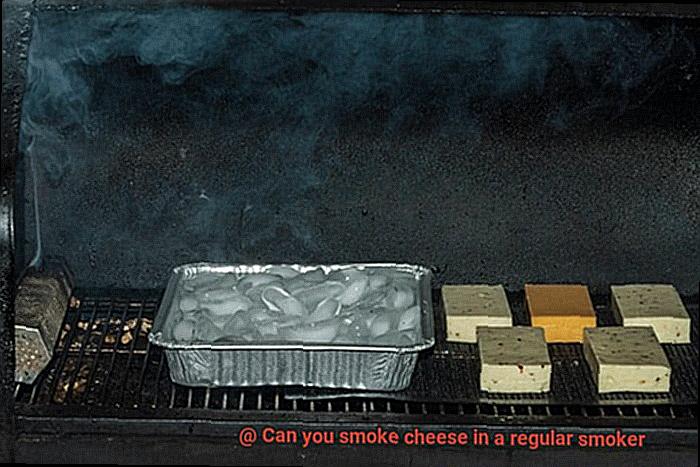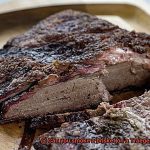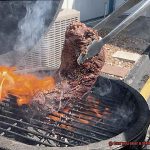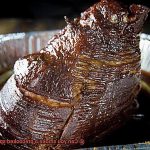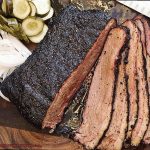If you’re craving that smoky goodness in your favorite dairy delight, I’ve got some exciting news for you. Wondering if you can smoke cheese in a regular smoker?
The answer is a big, fat YES. Smoking cheese takes its flavor to a whole new level of deliciousness.
But how do you actually do it? Don’t worry, my friend, I’ve got your back.
In this guide, we’ll walk through the simple yet oh-so-satisfying process of smoking cheese in a regular smoker. From choosing the perfect cheese to nailing the ideal temperature, we’ll cover all the steps needed for that mouthwatering smoky experience.
So, grab your favorite block of cheese and let’s embark on this flavor-packed adventure together.
Contents
What Type of Cheese Is Best for Smoking?
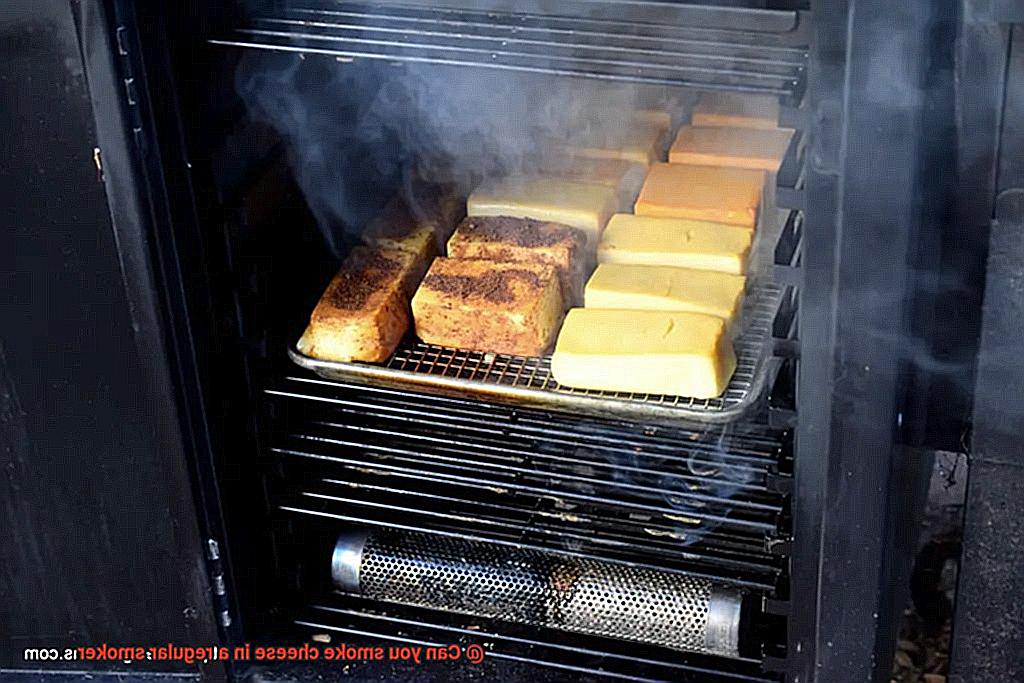
Smoking cheese is a delightful way to elevate your grilling experience. The smoky aroma and flavor can transform your favorite cheese into a culinary masterpiece. However, not all cheeses are created equal when it comes to smoking.
Here, we’ll explore the best types of cheese for smoking in a regular smoker and share some essential tips to ensure a successful outcome.
Hard Cheeses:
Hard cheeses like cheddar, gouda, or provolone are excellent options for smoking. Their lower moisture content allows them to withstand the smoking process without losing their texture or becoming overly soft. Smoked cheddar offers a rich and robust flavor, while smoked gouda boasts a creamy and slightly nutty taste.
Semi-Hard Cheeses:
Swiss or provolone are semi-hard cheeses that can also be successfully smoked. With a slightly higher moisture content than hard cheeses, they maintain their structure during smoking while adding their unique flavors to the mix.
Soft Cheeses:
While soft cheeses like brie or camembert can be smoked, they require careful attention during the process. Their high moisture content and delicate texture can make them prone to becoming runny or losing their shape when exposed to smoke for too long.
Tips for Smoking Cheese in a Regular Smoker:
- Choose good-quality cheese with firmness and no visible signs of mold or spoilage.
- Allow the cheese to come to room temperature before smoking, enhancing smoke adherence.
- Use milder woods like apple or cherry for a subtle smoky flavor that won’t overpower the cheese.
- Maintain a low smoker temperature of around 90-100°F (32-38°C) using a cold smoke generator or ice packs.
- Place the cheese on wire racks or use cheese mats for proper air circulation and prevent condensation.
- Smoke the cheese for 1-4 hours, depending on your preference for smoky flavor intensity.
- Let the smoked cheese rest and age for at least two weeks to allow flavors to meld and the cheese to firm up.
- Store smoked cheese properly by vacuum-sealing or wrapping it tightly in wax paper or plastic wrap to preserve its flavor.
Preparing the Smoker
Before you embark on this flavorful adventure, it’s essential to prepare your smoker properly. In this guide, we’ll take you through the crucial steps to ensure your smoker is ready to unleash the magic of smoky flavors.
Step 1: Cleanse Your Smoker
Before delving into the art of smoking cheese, give your smoker a thorough clean. Remove any remnants of ash, charcoal, or previous wood chips. Take a damp cloth and wipe down every nook and cranny, paying special attention to the grates or shelves where the cheese will rest. A pristine smoker sets the stage for mouthwatering results.
Step 2: Seasoning (If Required)
Certain smokers may require seasoning before use. This process entails coating the interior surfaces with cooking oil and heating it to create a protective layer. Refer to your smoker’s manual for specific instructions on how to properly season it. This step ensures that your cheese will be enveloped in perfection from start to finish.
Step 3: Preheating
With a sparkling clean smoker, it’s time to preheat it to the ideal temperature for smoking cheese. Aim for a low and steady heat between 80°F and 90°F. Allow your smoker to preheat for at least 30 minutes, ensuring it reaches a stable temperature before introducing the cheese. This step eliminates any initial bursts of heat that could compromise the delicate flavors.
Step 4: Generating Smoke
During the preheating process, enhance the magic by adding wood chips or chunks to generate smoke. Opt for mild-flavored woods like apple, cherry, or maple that won’t overpower the cheese’s subtle taste. Soak the wood chips or chunks in water for about 30 minutes beforehand to ensure they smolder slowly and produce a clean smoke. This step sets the foundation for a symphony of flavors.
Step 5: The Smoky Infusion Begins
With your smoker preheated and wisps of smoke dancing in anticipation, it’s time to introduce your cheese. Carefully arrange the cheeses on the grates or shelves, allowing sufficient space between each piece for the smoke to envelop them evenly. Close the smoker’s door and let the magic unfold. The smoky goodness will gradually seep into every crevice, transforming your cheese into a culinary masterpiece.
Maintaining Low Temperature Inside the Smoker
Maintaining a low temperature inside the smoker is crucial for smoking cheese. Cheese is highly sensitive to heat and can easily melt or lose its shape if exposed to high temperatures. To achieve that perfect balance of smoky flavor and creamy texture, it is essential to understand the techniques and methods for keeping the smoker at a low and consistent temperature.
Proper ventilation is key when it comes to maintaining a low temperature inside the smoker. Good airflow helps regulate the temperature by allowing hot air to escape and cooler air to enter.
Adjustable vents or dampers are commonly found in smokers and can be used to control the airflow. By partially opening the vents, you can let in just enough oxygen to keep the fire burning without cranking up the heat. Monitoring the temperature throughout the smoking process and adjusting the vents accordingly will help maintain a consistent low heat.
Using a water pan is another effective technique for maintaining a low temperature. Placing a pan of water inside the smoker creates a moist environment that helps regulate the temperature. The water absorbs heat from the fire and evaporates slowly, creating a cooling effect that keeps the temperature steady and prevents any sudden spikes.
Controlling the amount of fuel used is also crucial in maintaining a low temperature. Using a smaller fire or fewer coals reduces the heat output, ensuring that the smoker stays at a lower temperature. However, finding the right balance is essential as too little fuel may result in insufficient smoke production.
Insulation plays a significant role in maintaining a low temperature inside the smoker. Insulating materials designed specifically for smokers can help retain heat and prevent temperature fluctuations caused by external factors such as wind or cold weather. Consider using insulating blankets or wraps to provide that extra layer of protection and stability.
Monitoring and controlling the temperature using a thermometer is vital throughout the smoking process. While many smokers come with built-in thermometers, it’s always recommended to use an additional external thermometer for accuracy. Keeping a close eye on the temperature and making adjustments if needed will help maintain that low, consistent heat.
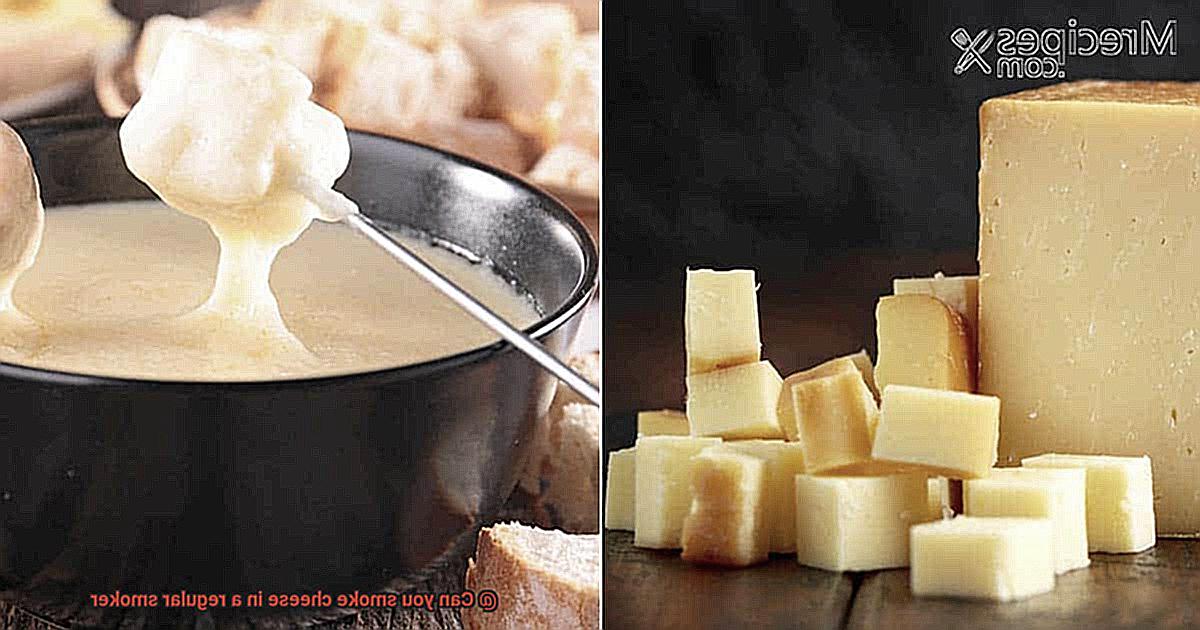
Smoking Time
Step into the captivating realm of cheese smoking, where culinary finesse and artistry combine to create a symphony of flavors. Just like a maestro conducting an orchestra, mastering the art of smoking cheese demands precision and expertise.
In this guide, we will unravel the mysteries of smoking time, exploring the factors that contribute to achieving that perfect balance of smoke-infused deliciousness. So, get ready to embark on a tantalizing journey through the world of cheese smoking.
Cheese Type:
Each cheese possesses its own unique personality, dictated by its density and moisture content. These characteristics play a vital role in determining the ideal smoking time. Soft cheeses like brie or camembert, with their delicate textures, require less time in the smoker to absorb flavors. In contrast, harder cheeses such as cheddar or gouda necessitate a longer smoking duration to achieve optimal taste infusion.
Temperature Control:
The secret to preserving cheese’s integrity lies in maintaining a low temperature during the smoking process. Aim for a gentle heat between 90-100°F (32-38°C) to prevent unwanted melting or overcooking. Some smokers offer adjustable temperature controls, rendering it easier to maintain the perfect smoking conditions. For those with manual smokers, be prepared for hands-on monitoring and adjustment to ensure a flawless outcome.
Wood Choice:
In the enchanting realm of cheese smoking, wood choice is akin to selecting a companion for your culinary adventure. The type of wood chips or pellets used significantly impacts the final flavor profile of your smoked cheese.
Delve into a world of diverse tastes by experimenting with apple for subtle sweetness, hickory for robust intensity, or mesquite for a bold and smoky essence. Remember, each wood imparts its unique characteristics onto the cheese, elevating it to new levels of gastronomic delight.
Personal Preference:
Smoking time is an art influenced by personal taste preferences. Begin with a shorter smoking duration, gradually increasing it to achieve your desired level of smokiness. Remember, it is easier to add more smoke flavor than to tame an overpowering smokiness. Allow your taste buds to guide you on this delectable journey as you create a cheese that resonates with your unique culinary desires.
Monitoring and Resting:
As the symphony of smoke and cheese unfolds, vigilant monitoring is essential to prevent an overly smoky or bitter outcome. Keep a watchful eye on your cheese throughout the smoking process, ensuring it reaches its optimal flavor peak.
Once the desired smoking time has been achieved, remove the cheese from the smoker and grant it a moment of repose. Allowing it to rest and cool before refrigeration enables the flavors to harmoniously meld together, resulting in a truly exquisite taste experience.
Placing the Cheese in the Smoker
Smoking cheese is a game-changer that will leave you craving for more. The perfect balance of smoky flavors and creamy cheese is a match made in grilling heaven. In this guide, we’ll walk you through the art of placing cheese in the smoker, ensuring a symphony of taste and texture. Get ready to dive into the world of smoky cheese.
Step-by-Step Instructions:
- Preheat your smoker: Before anything else, get that smoker preheated to maintain a consistent temperature. Remember, we’re going for a cold-smoking method, so keep it below 90°F (32°C). This low heat allows the cheese to absorb the smoky goodness without losing its shape.
- Use a wire rack or cheese mat: Elevate your cheese game by placing it on a wire rack or cheese mat. Why? It’s all about proper airflow and even smoke distribution. Let each piece of cheese bask in the smoky glory.
- Space it out: Give your cheese some breathing room. Leave enough space between each piece to ensure that the smoke circulates evenly. Every bite should be filled with smoky delight.
- Utilize built-in compartments: If your smoker comes with fancy compartments designed specifically for smoking cheese, embrace them. They’re there for a reason – to give you optimal results and flavor perfection.
- Create a makeshift compartment: No dedicated cheese smoking compartments? No problem. Grab some aluminum foil or a disposable aluminum pan and make your own. Fill it with wood chips or pellets, place it away from the heat source, and let the magic happen. Smoke without direct heat.
- Monitor the temperature: Keep an eagle eye on that smoker temperature throughout the smoking process. Fluctuations can make or break your cheese game. Invest in a reliable thermometer and make adjustments as needed.
- Timing is everything: How long should you smoke that cheese? Well, it depends on your personal preference and the type of cheese. As a general guideline, aim for 1 to 4 hours of smoking time. But remember, some cheeses may need extra love to reach their full flavor potential.
- Handle with care: When the time is up, remove your smoked cheese from the smoker with gentle hands. Treat it like a delicate masterpiece – no rough handling allowed. We want every bite to be a delight.
- Allow to rest and cool down: After smoking, let the cheese rest and cool down before refrigerating. This allows the flavors to mingle and intensify, taking your taste buds on a smoky journey of pure bliss.
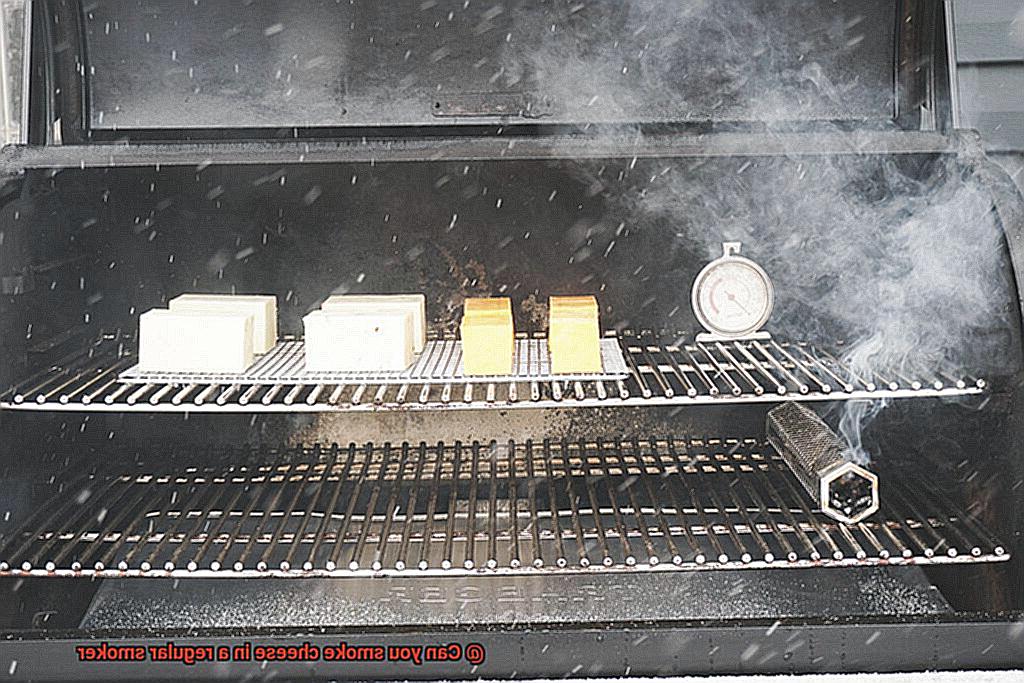
Aging and Resting Process
Aging and resting are not just ordinary steps in the cheese-making process; they are the secret ingredients that elevate your grilling game to a whole new level. If you’re ready to embark on a flavor-filled journey, exploring the magical process of aging and resting in cheese-making, especially when it comes to those delectable smoked cheeses, then buckle up, because this is a ride you won’t want to miss.
Let’s start with the basics. Aging and resting are essential for both traditional cheeses and their smoky counterparts. Aging is like a fine wine aging gracefully over time. As the cheese ages, its flavors mature and intensify, while the texture becomes firmer and more complex.
Now, let’s dive into resting. This crucial period allows the cheese to settle and stabilize, ensuring a consistent texture and flavor throughout. Think of it as giving your cheese some well-deserved relaxation time before it hits your taste buds.
When it comes to smoked cheeses, aging and resting take on a whole new level of awesomeness. After being smoked, these cheeses need time to settle, allowing those smoky flavors to integrate with the creamy goodness. Patience truly pays off here.
The length of resting for smoked cheeses can vary depending on personal preference. Some people can’t resist diving right into their smoky creation immediately after smoking. And hey, there’s nothing wrong with that. But for those who prefer a more mellow flavor profile, a longer resting period can work wonders.
Now, let’s talk about the nitty-gritty details that make all the difference. Temperature and humidity are key players during aging and resting. To achieve optimal results, cheese needs to be stored in a controlled environment. Professional cheesemakers often use specialized aging rooms or caves to create the perfect conditions. These rooms maintain specific temperatures and humidity levels, allowing the cheese to develop its unique characteristics.
But don’t worry if you don’t have a fancy aging room at your disposal. You can still achieve fantastic results by resting your cheese in a regular refrigerator. Just make sure to store it in a cool, dark place with proper ventilation to maintain that perfect balance of flavors and textures.
One final tip for all you smoked cheese enthusiasts out there: wrap your cheese properly during resting. This will prevent it from drying out or absorbing unwanted odors from other foods in the refrigerator. After all, you want to preserve those amazing smoky flavors.
Storing the Smoked Cheese Properly
Smoked cheese, with its tantalizing smoky flavor, is a culinary delight that adds a unique twist to any dish. Whether you’re grilling burgers or assembling a charcuterie board, properly storing smoked cheese is essential to preserve its delectable flavors and maintain its luscious texture. In this article, we will explore the best practices for storing smoked cheese to ensure that every bite remains a mouthwatering experience.
- Allow the Cheese to Cool Completely: Once you’ve finished smoking the cheese, exercise patience and allow it to cool down completely. This process typically takes around 2 hours. Allowing the cheese to cool is crucial as it allows it to settle and retain its shape, ensuring an optimal texture.
- Wrap it Tightly: Once cooled, wrap the smoked cheese tightly in plastic wrap or aluminum foil. This step is vital in protecting the cheese from exposure to air, which can cause it to dry out and lose its exquisite flavors. The tight seal keeps the smoky essence locked within, ready to burst forth with each bite.
- Find the Perfect Storage Spot: Smoked cheese thrives in a cool and dry environment, much like a connoisseur of fine wines. Aim for a temperature range between 35°F and 45°F (1.5°C and 7°C) to maintain the cheese’s flavor and prevent spoilage. If you’re fortunate enough to have a basement or a wine cellar, these are excellent options as they provide a stable and cool setting for storage.
- Avoid Refrigeration if Possible: While your first instinct might be to pop the smoked cheese in the refrigerator, think again. Refrigeration can alter the taste and texture of this delicacy. However, if you live in a warm climate or have cut the cheese into smaller pieces, refrigeration may be necessary to prevent spoilage. In such cases, make sure to wrap the cheese tightly to minimize exposure to cold air.
- Airtight Containers are Key: If refrigeration is necessary, store the smoked cheese in an airtight container or a resealable plastic bag. This shields it from absorbing unwanted odors from other foods and maintains its distinct smoky flavors. Imagine opening the container and being greeted by a burst of smoky goodness.
- Regular Check-ups: Smoked cheese can be stored for several weeks or even months if stored properly. However, for the best flavor experience, it is recommended to consume it within a few weeks. Before indulging in aged smoked cheese, conduct a thorough inspection for any signs of mold or spoilage. Discoloration, sliminess, or off smells are indicators that the cheese should be discarded. It’s better to be safe than sorry.
Benefits of Smoking Cheese in a Regular Smoker
If you’re a grilling enthusiast, you already know the exhilaration of smoking meat to perfection. But have you ever considered the untapped potential of your regular smoker? Let me introduce you to a game-changer that will elevate your culinary experience: smoking cheese.
First and foremost, smoking cheese adds an extraordinary dimension of flavor to your dishes. The process infuses the cheese with a distinct smoky taste that cannot be replicated through other cooking methods. Picture sinking your teeth into a creamy piece of cheddar or gouda, only to be greeted by a subtle hint of hickory or applewood. It’s like a flavor explosion in your mouth that will awaken your taste buds and leave you craving more.
But the benefits don’t stop at flavor. Smoking cheese also extends its shelf life. The smoke acts as a natural preservative, preventing spoilage and allowing you to savor your favorite cheeses for longer periods. No more fretting about that precious wheel of brie going to waste.
In addition to enhancing taste and preserving freshness, smoking cheese offers aesthetic appeal. The process imparts a beautiful golden-brown color to the exterior, transforming it into a visual masterpiece that is as pleasing to the eye as it is to the palate. It’s like art for your taste buds, elevating the experience from ordinary to extraordinary.
One of the most alluring aspects of smoking cheese is its versatility. Experimentation becomes your playground as you explore different types of wood chips or pellets, each imparting its own unique flavor profile. Unleash your inner mad scientist and create bold and smoky flavors with hickory or embrace subtle sweetness with fruitwoods like apple or cherry. The choice is yours, and the possibilities are endless.
But smoking cheese isn’t just about individual flavors; it’s about harmonizing with other ingredients to create culinary masterpieces. From sandwiches to salads, pasta dishes to charcuterie boards, smoked cheese can elevate any recipe to new heights. Its smoky essence complements and enhances the taste of other ingredients, adding a depth and complexity that will impress even the most discerning foodie.
Beyond its deliciousness and versatility, smoking cheese is a fun and creative way to expand your culinary repertoire. With a plethora of different cheeses available, each with its own unique characteristics, you can mix and match flavors to create your own signature blends that suit your taste preferences. The satisfaction of crafting your own distinct creations is unparalleled.
Lastly, there is immense gratification in knowing exactly what goes into your smoked cheese. By taking on this endeavor at home, you have full control over the quality of ingredients used. No additives or preservatives, just pure, natural, and flavorful cheese that you can savor with confidence.
Conclusion
Yes, you can absolutely smoke cheese in a regular smoker. It’s a fantastic way to add a whole new level of flavor to your favorite cheeses. The process is surprisingly simple and yields delicious results that will leave you craving more.
When it comes to smoking cheese, the key is to use a cold-smoking method. This means that the temperature inside the smoker should be kept low, ideally below 90 degrees Fahrenheit. This prevents the cheese from melting or becoming overly soft during the smoking process.
To get started, choose your favorite types of cheese. Whether it’s cheddar, gouda, or even brie, almost any kind of cheese can be smoked. Just make sure they are firm enough to hold their shape when exposed to heat.
Next, prepare your smoker by adding wood chips or pellets specifically designed for smoking. Popular choices include applewood, hickory, or mesquite. These woods impart unique flavors that complement the natural taste of the cheese.
Once your smoker is ready, place the cheese on a wire rack or a perforated pan inside the smoker. This allows the smoke to circulate evenly around each piece of cheese, ensuring consistent flavor infusion.
Now comes the waiting game. Smoking times can vary depending on personal preference and desired intensity of flavor. Generally, it’s recommended to smoke cheese for about 1-3 hours. However, some people prefer longer smoking times for a more robust taste.
During the smoking process, keep an eye on the temperature inside the smoker and make sure it stays within the desired range. If necessary, adjust the airflow or add ice packs to maintain a cool environment.
Once your cheese has reached its desired level of smokiness, remove it from the smoker and let it rest for at least 24 hours before enjoying. This resting period allows the flavors to mellow and meld together for optimal taste.
When you finally take that first bite of your homemade smoked cheese, you’ll be greeted with a symphony of flavors. The smoky notes intertwine with the creamy richness of the cheese, creating a taste sensation that is truly irresistible.
So, don’t hesitate to fire up your regular smoker and start smoking cheese today. With a little patience and experimentation, you’ll unlock a whole new world of culinary delights that will have your taste buds dancing with joy.

